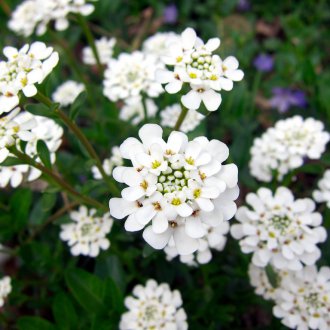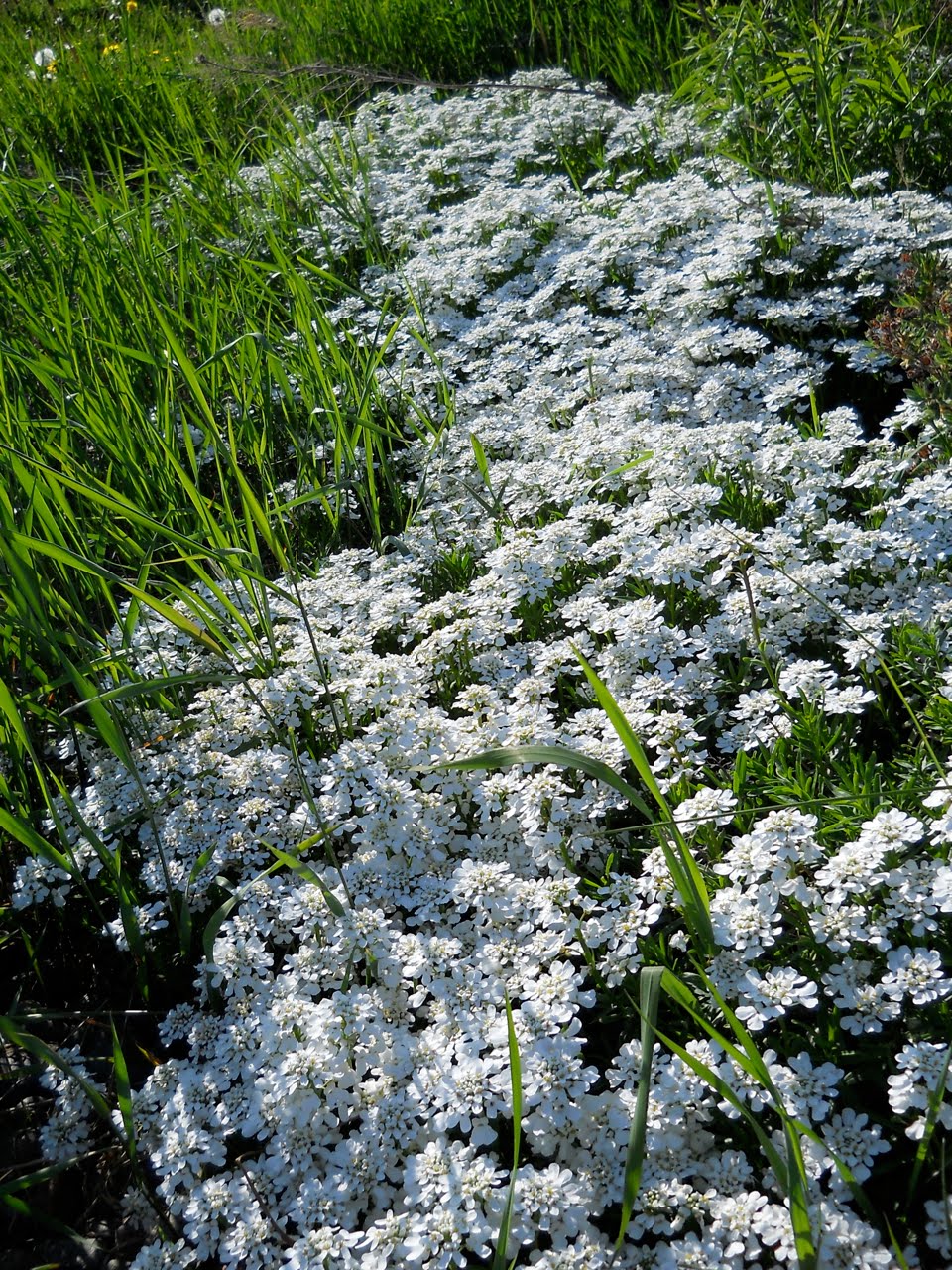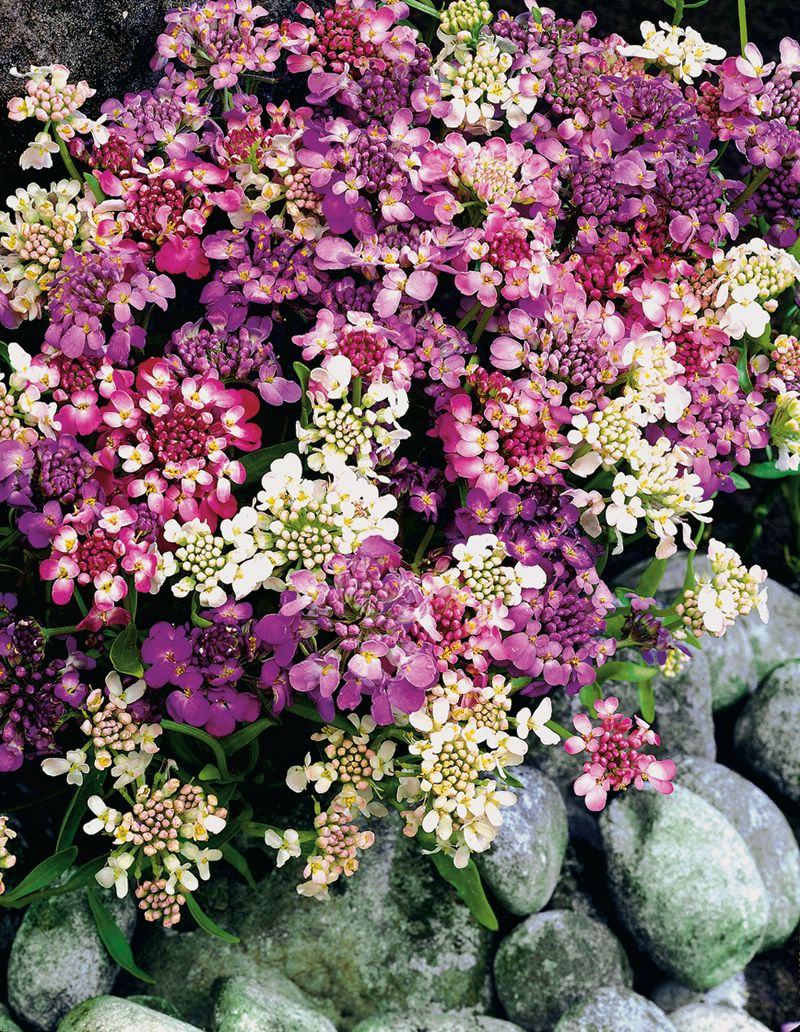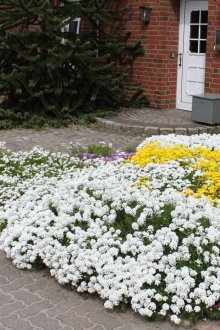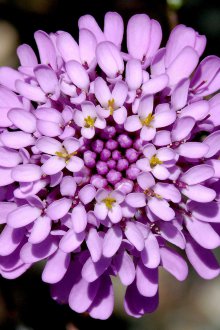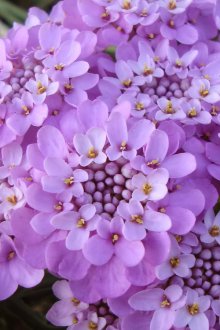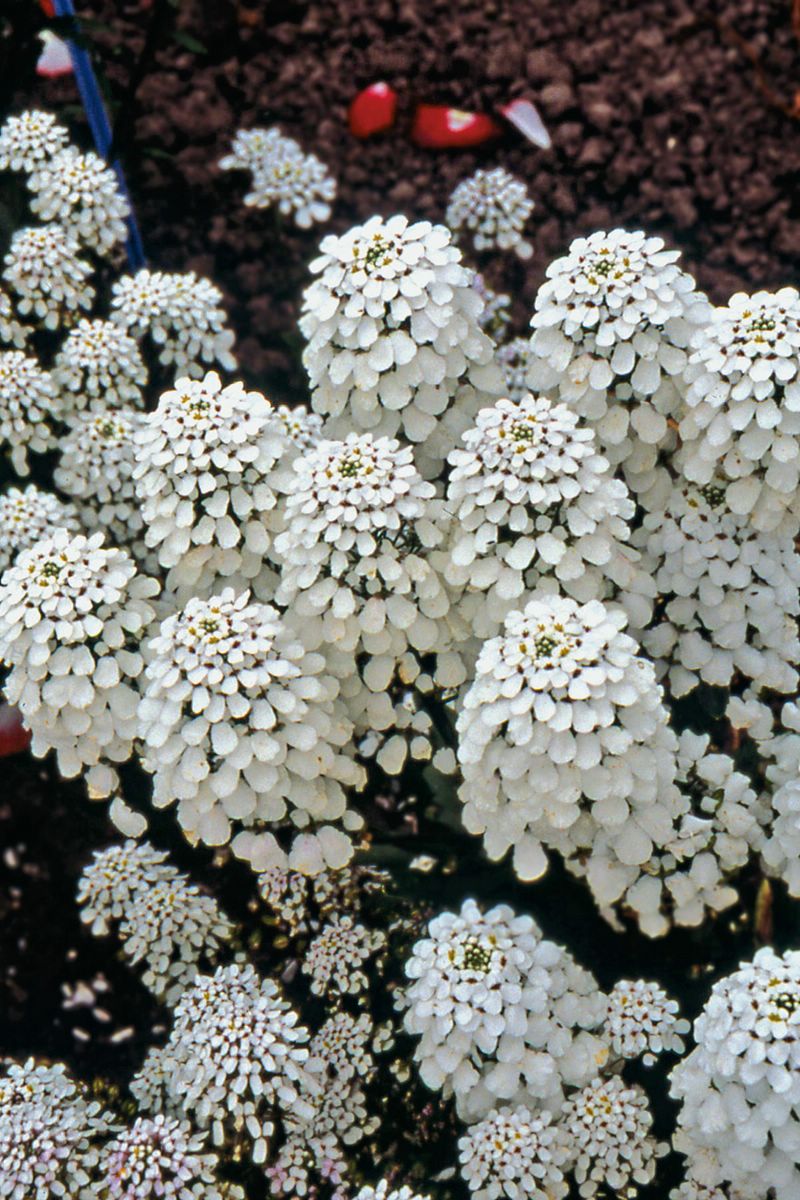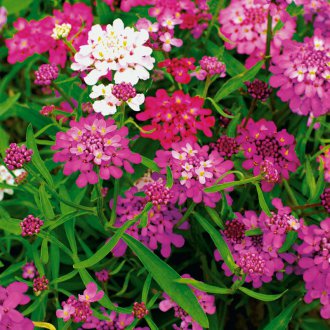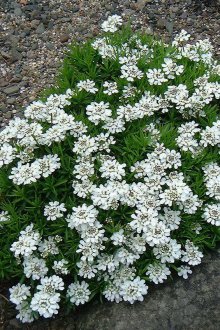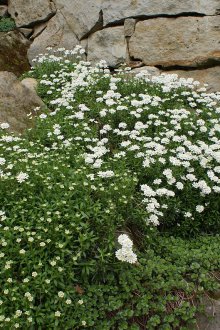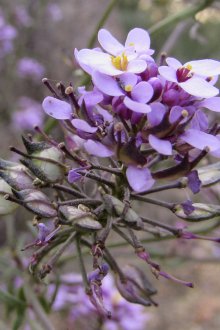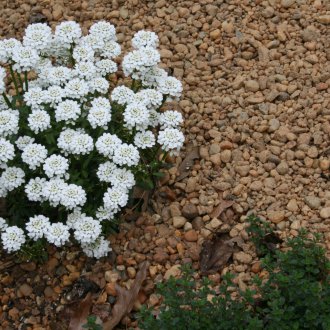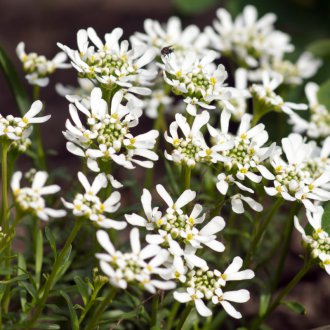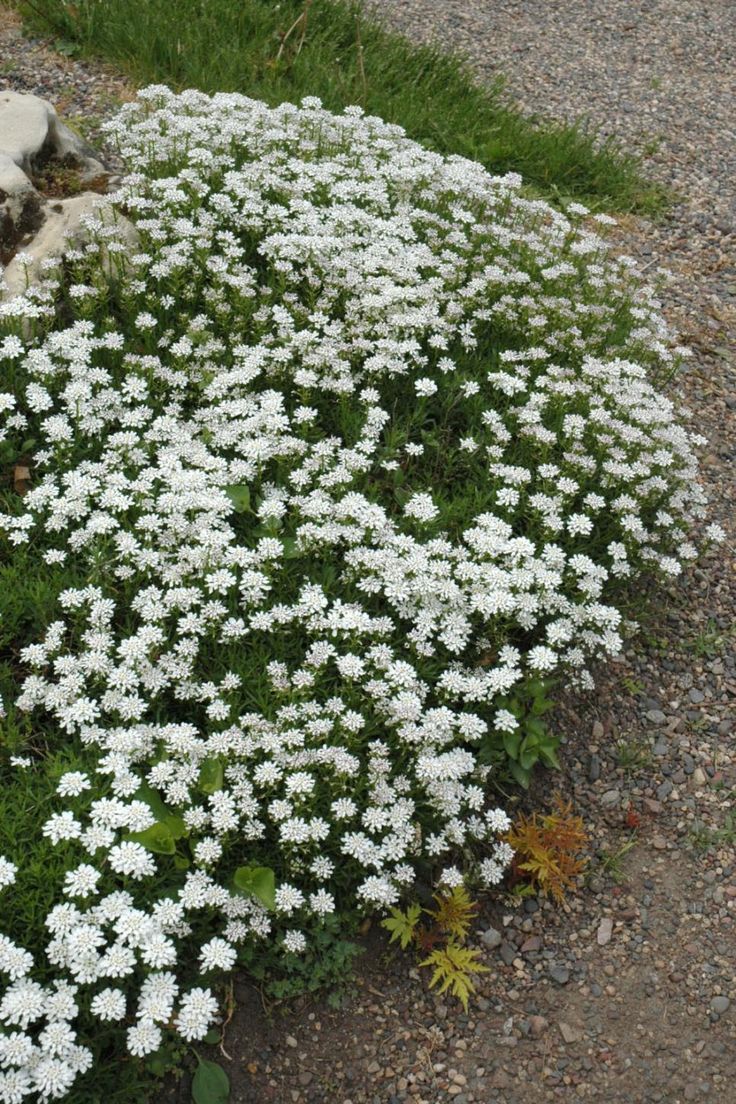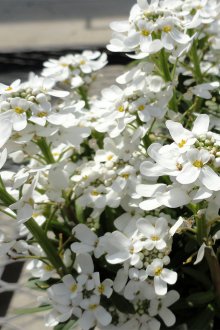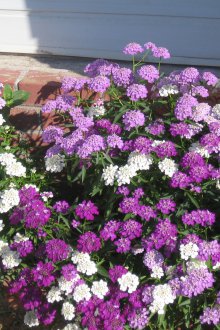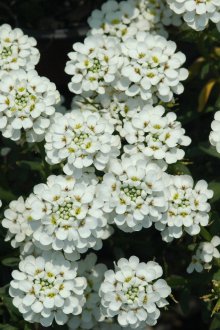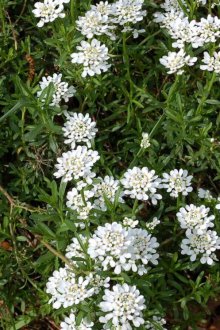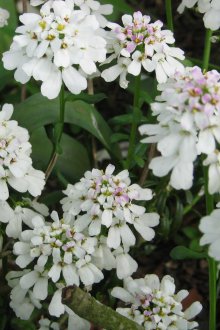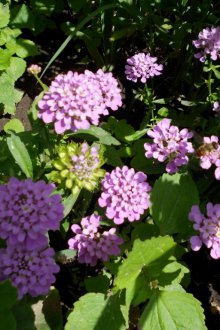Fragrant Iberis - Spanish herbs in the garden (22 photos)
Content
Creating a bright, unique image of our garden, we choose various shrubs and flowers. One of them is Iberis (aka Iberian, goldflower or stennik), who came to us from the slopes of the Iberian mountains in Spain.
Iberian belongs to the Cruciferous family and has about 40 subspecies. Among them there are annual plants, perennial variants that can easily survive our winter, as well as an evergreen variety.
All of them are distinguished by long lush flowering, delicate aroma, ease of care. These squat bushes will fit perfectly into the design of flower beds and alpine slides. Landing does not require much effort or time.
Types of Iberis
Iberis includes a large number of subspecies, from 10 to 45 cm tall. The base of the plant is squat, tree-like. Shoots are green, often stretch up, but in some varieties they spread horizontally. The leaves are narrow, oblong, saturated emerald color (about 30 * 5 mm in size).
The flowering of the goldflower begins in May and lasts up to 60 days. The buds are tied abundantly, the flowers are small, arranged in bunches. The color scheme is different: from snow-white to lilac and lilac shades. During the period of active color, they form a continuous fluffy hat that exudes a pleasant aroma.
After successful pollination, small pods with seeds are formed, which can be used for planting the next 2–4 years.
There are several most popular varieties. Let's talk about them in more detail.
Iberis annual
The two most common types of annual stennik are Iberis Bitter and Iberis Umbrella. The first is up to 30 cm tall, has pubescent shoots, small spiky foliage. The flowers are white, small, form fluffy brushes.
Umbrella Iberis is distinguished by a branching base and the absence of an edge on the shoots. Its height is greater than the previous one by an average of 10 cm. The leaves are narrow, long (up to 7 cm). Elegant flowering pale pink or saturated lilac hue.
Iberis perennial
The following varieties belong to perennial:
- Iberis is evergreen. Perhaps the most common type that can decorate any garden with numerous white flowers. Caring for the evergreen wall is extremely simple: you just need to free it from wilted inflorescences and water it in arid periods.
- Gibraltar It was widely used due to its unpretentiousness, neat appearance and gentle purple tone of flowers. The species is characterized by a small height (10–15 cm) and a thyroid form of inflorescences.
- Variety "Crimean". A short perennial, 9-12 cm high. Flat leaves have a gray-green hue. Of interest are the flowers: until the buds open up, they are cast in soft purple. During active flowering, they turn white.
- Iberis is rocky. It spreads on the ground, shoots are not more than 15 cm in height. The flowering is so plentiful that the foliage and interweaving of the branches of the base are completely invisible behind the flowers.
- Chameleon. It is popular due to the unusual overflow of petals from white-pink to violet color, as well as a wonderful sweetish smell. The variety is characterized by ease of planting, splendor of inflorescences, high frost resistance.
The evergreen species of Iberis and its other varieties are stably in demand both among landscape designers and among ordinary lovers of a summer vacation. They look great in combination with other undersized flowers, conifers, ornamental shrubs.
Iberis breeding
Iberis flowers are known for their ease of propagation. For this, seeds and seedlings obtained from them are used. Plus the possibility of cuttings of perennial species.
Seed propagation
Ripened goldflower seeds are harvested during the entire flowering period. The pods are dried and kept warm. If the seeds are not collected, then the next year will have to thin out the thick shoots of young animals.
To get seedlings from seeds, they are sown in soft soil to a minimum depth, around the end of March. You can just sprinkle them with coarse sand. This should be done in a warm room.
For irrigation use a spray gun so that the seeds are not washed out under the pressure of water. Planting seedlings in open ground is possible when night frosts end, and the daytime temperature approaches + 15 °.
Keep a distance of 25-30 cm between the bushes. If you planted young growth quite often, and everything has taken root well, it is worth thinning out the young plants. So, they can fully develop without interfering with each other.
To prolong flowering, Iberis can be planted in open ground in batches with an interval of 1-2 weeks.
Cherenkov method
Iberis evergreen after reaching 5 years old can be planted by cuttings. To do this, cut part of the bush along with a woody base and young shoots. Landing and further care in the open ground do not require any labor-intensive measures. It is very important to plant the plants in early spring or autumn, before the onset of cold weather.
Care Features
In general, the plant is unpretentious and does not require complex care. It is important to plant Iberis in a well-lit place, as they love sunlight. In the shady side, the shoots are very long, the buds will fall off, the foliage will dry out. The earth will be porous, including rocky and sandy soil, with sufficient air exchange.
Iberis evergreen (and other species) does not require frequent watering. The roots do not tolerate excess water in the soil, as they tend to rot. In the hot period, in the absence of rain, it is enough to carefully water the wall twice a week.
Perennial plants are planted by dividing upon reaching the age of five. It is also important to annually prune the stems after the end of flowering and seed ripening. You can shorten them by ⅓ of the total length. Given that Iberis blooms for quite some time, wilted flowers should be removed and new ones should be given. So, the bush will always look well-groomed and tidy.
Compliance with these simple rules will allow you to easily grow a healthy, vibrant, fragrant Iberis.
Plant nutrition
It will be advisable to feed a perennial plant once or twice a year. They do this in the spring, in preparation for flowering, using complex fertilizer. What will contribute to a more active tie buds and lush color.
The second option is to fertilize Iberis with compost at the end of the summer season. To do this, dig a small moat at a certain distance from the bush, pour compost diluted with water there, and cover it with earth. It is acceptable to use both methods for one year, especially on scarce soils.
Excess fertilizer will lead to excessive growth of the Iberian and the need to constantly adjust the size of the bush. On fertile soils, fertilizing the evergreen Iberis can be done once every 2-3 years.
Iberis Diseases
Cultivation of Iberis is not too laborious, but sometimes you have to fight against diseases of bushy flowers. Worms and an earthen flea eating leaves and stems of a goldflower can cause a lot of anxiety.To eradicate pests, use Actara and regular irrigation with water on the surface of the earth around the bush.
Aphids are also seen among pests that have chosen Iberis. Its appearance is indicated by whitish spots on the leaves, the drying of flower shoots. A liquid solution of potassium soap or tobacco broth will help to remove aphids.
The weak point of Iberian is the root system, as it is susceptible to rot and fungus. The alarming symptoms in this case are growths on the roots, slow development of the plant, yellowing of the foliage. To avoid the appearance of fungus, treat the area with fungicide before planting seedlings in open ground. If after that you still find the affected plant, it will have to be destroyed and re-cultivated.
Preventive measures and a little care will prevent infection of the flower with fungi and pests, most of which can be successfully combated if treatment is started at the first sign of the disease.
Iberis retains an enviable popularity not only in personal plots, but also in the process of landscaping the city limits. All thanks to the long, plentiful flowering, simplicity of planting and unpretentious seedlings. So, to grow a fragrant, fluffy Iberian is under the strength of everyone.

